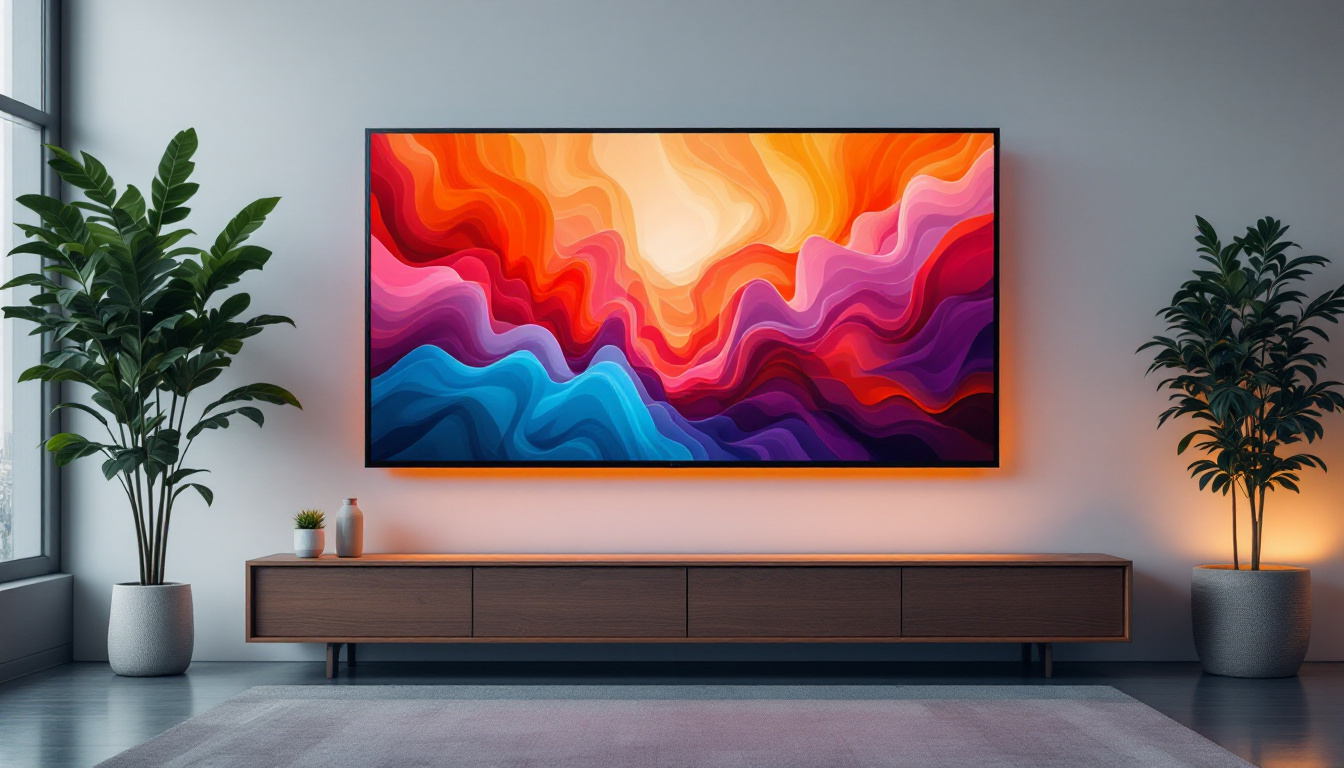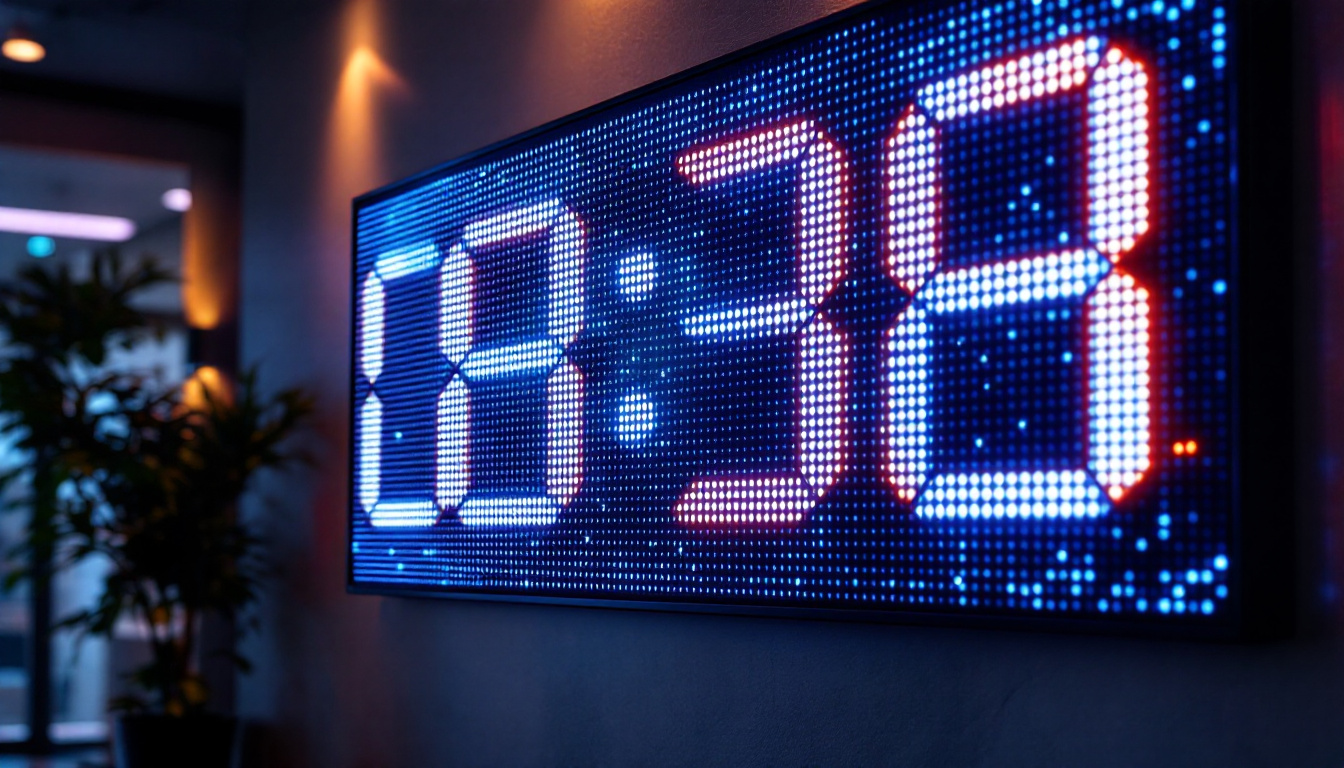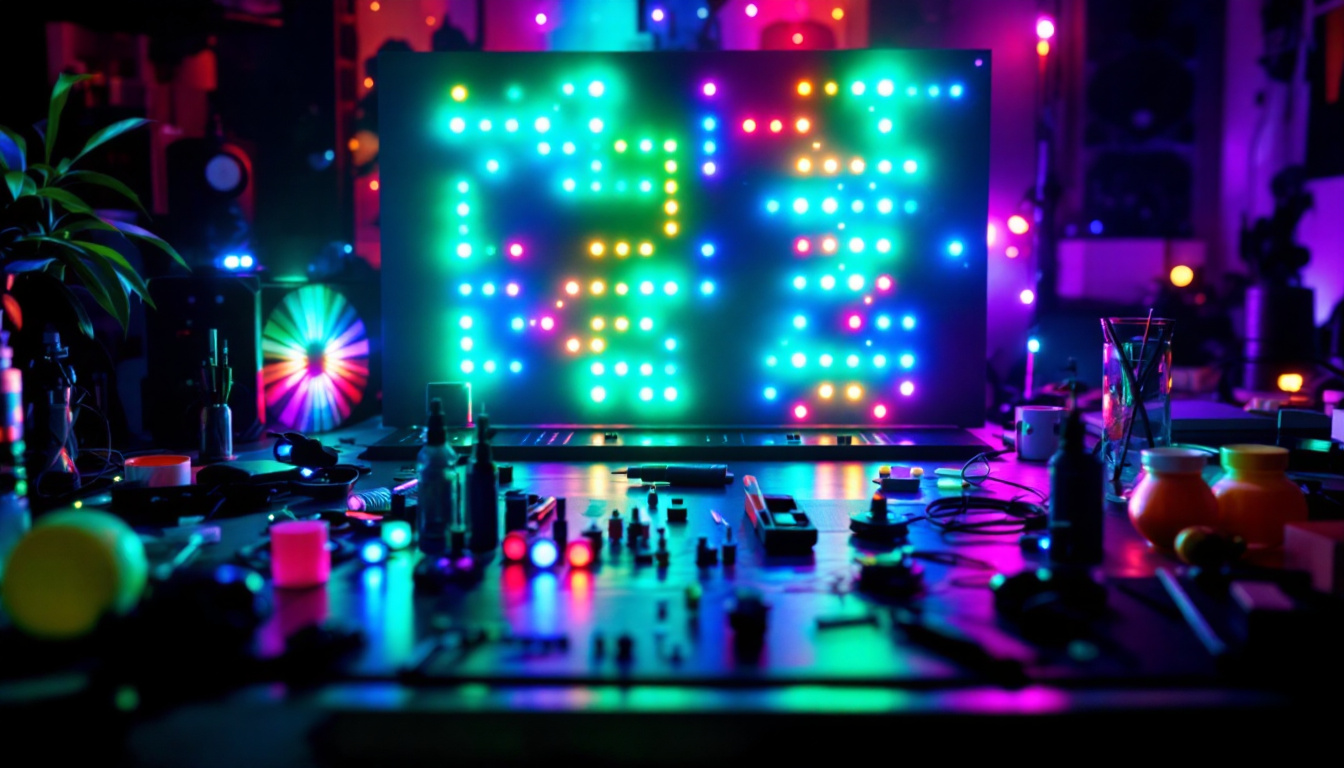Diy Transparent LCD Display: LED Display Explained
In recent years, transparent LCD and LED displays have captured the imagination of tech enthusiasts, designers, and innovators alike. These futuristic screens offer a unique blend of visibility and interactivity, enabling applications ranging from augmented reality to retail showcases. For DIY hobbyists and professionals interested in building or understanding transparent displays, this article provides a comprehensive exploration of the technology, components, and practical considerations involved.
Understanding Transparent LCD and LED Displays
Transparent displays differ fundamentally from traditional screens by allowing light to pass through the display panel, making the screen partially see-through. This capability opens a wide range of applications where digital content can be overlaid onto real-world objects without obstructing the view. From retail environments showcasing products behind a digital interface to innovative advertising solutions that blend seamlessly with their surroundings, transparent displays are revolutionizing how we interact with visual information.
There are two main types of transparent displays: transparent LCDs (Liquid Crystal Displays) and transparent LED (Light Emitting Diode) displays. While both achieve transparency, their underlying technologies and use cases vary significantly. Each type brings unique advantages and challenges, making them suitable for different environments and applications. As technology continues to evolve, the potential for these displays expands, paving the way for more immersive and interactive experiences.
How Transparent LCDs Work
Traditional LCDs rely on a backlight that illuminates pixels sandwiched between polarized glass layers. In transparent LCDs, the backlight is removed or replaced with a transparent light source, such as ambient light or edge lighting. The liquid crystals modulate the light passing through them, creating images while still allowing light from behind the display to be visible. This innovative approach allows for the integration of digital content with physical objects, enhancing user engagement in various settings.
Because transparent LCDs use the ambient light rather than a dedicated backlight, they tend to be more energy-efficient and can maintain a high level of transparency, often between 30% and 70%. However, their brightness and contrast are typically lower than conventional LCDs, which can limit their use in brightly lit environments. Despite these limitations, transparent LCDs are increasingly being utilized in museums for interactive exhibits, in automotive displays for navigation and information, and in smart home applications where they can provide information without obstructing views.
How Transparent LED Displays Work
Transparent LED displays consist of a matrix of LEDs arranged on a transparent substrate, such as glass or acrylic. Instead of a solid panel, these displays use spaced-out LEDs that emit light to form images, while the gaps between LEDs allow light to pass through, creating transparency. This design not only enhances the aesthetic appeal but also allows for greater flexibility in installation, as they can be mounted in various configurations without compromising visibility.
These displays can achieve higher brightness levels than transparent LCDs, making them suitable for outdoor and high ambient light conditions. Transparency levels for LED displays usually range from 40% to 80%, depending on the pixel pitch and LED density. The trade-off is that LED displays typically have lower resolution compared to LCDs, which can affect image sharpness. Nevertheless, the vibrant colors and dynamic content they can display make them ideal for advertising in storefronts and public spaces, where capturing attention is crucial. Additionally, advancements in technology are continually improving the resolution and color accuracy of transparent LED displays, further broadening their potential applications in fields such as architecture and entertainment.
Key Components for Building a DIY Transparent LCD Display
Creating a transparent LCD display from scratch is a complex but rewarding project. Understanding the essential components and their roles is critical to success.
Transparent LCD Panel
The heart of the display is the transparent LCD panel itself. These panels are commercially available but can be costly. They come in various sizes and resolutions. When selecting a panel, consider factors such as transparency percentage, resolution, and compatibility with control electronics.
Controller Board and Driver Electronics
The controller board serves as the interface between the display panel and the video source. It processes input signals (HDMI, VGA, or LVDS) and converts them into signals the LCD panel can understand. For transparent panels, specialized controllers that support the panel’s unique timing and voltage requirements are necessary.
Some DIY enthusiasts repurpose controllers from traditional LCD panels, but this requires careful matching of specifications to avoid damaging the panel.
Power Supply and Lighting
Unlike conventional LCDs, transparent LCDs often rely on ambient or external lighting sources, but some designs incorporate edge-lit LEDs to enhance visibility. A stable power supply is essential to ensure consistent operation of the controller and any lighting components.
Protective Enclosure and Mounting Hardware
Since transparent LCD panels are fragile, a sturdy enclosure protects the display and provides mounting options. Materials like acrylic or tempered glass are common choices for enclosures, balancing protection and transparency.
Step-by-Step Guide to Assembling a DIY Transparent LCD Display
Building a transparent LCD display involves careful assembly and calibration. The following outlines a general approach suitable for experienced DIYers.
1. Selecting the Right Panel and Controller
Begin by sourcing a transparent LCD panel that fits your size and resolution requirements. Verify the panel’s datasheet and obtain a compatible controller board. Many manufacturers provide controller kits tailored to specific panels.
2. Preparing the Workspace
Work in a clean, static-free environment to prevent damage to sensitive electronics. Gather tools such as screwdrivers, anti-static wrist straps, soldering equipment (if needed), and cleaning supplies.
3. Connecting the Controller to the Panel
Carefully connect the ribbon cables from the controller board to the LCD panel. Ensure correct orientation and secure connections to avoid signal issues. Double-check pin assignments against the datasheet.
4. Integrating Lighting (Optional)
If the panel requires edge lighting, install LED strips around the panel’s edges. Use diffusers to evenly distribute light and avoid hotspots. Connect the LEDs to a regulated power supply with appropriate current ratings.
5. Powering Up and Testing
Power the controller and lighting system. Connect a video source and verify that the display renders images correctly. Adjust brightness and contrast settings via the controller’s interface.
6. Enclosure Assembly
Mount the assembled display into the protective enclosure. Ensure all cables are neatly routed and secured. The enclosure should not obstruct the display’s transparency or viewing angles.
Applications and Advantages of Transparent Displays
Transparent LCD and LED displays are revolutionizing how digital content integrates with physical environments. Their unique properties enable innovative applications across multiple industries.
Retail and Advertising
Transparent displays are increasingly popular in retail environments, where they can be embedded in store windows or product cases. This allows retailers to showcase dynamic promotions and product information without blocking the view of merchandise behind the glass. According to a 2023 report by MarketsandMarkets, the transparent display market is projected to grow at a CAGR of 18% over the next five years, driven largely by retail and advertising sectors.
Automotive and Transportation
Heads-up displays (HUDs) in vehicles are a practical application of transparent LCD technology. They project navigation, speed, and safety information onto the windshield, allowing drivers to keep their eyes on the road. Transparent LED displays are also being explored for public transportation windows to provide real-time route updates without obstructing views.
Architecture and Interior Design
Transparent displays enable architects and interior designers to incorporate interactive digital elements into glass walls and partitions. This creates dynamic environments that can change ambiance, provide information, or enhance privacy on demand.
Challenges and Considerations in DIY Transparent Display Projects
While transparent displays offer exciting possibilities, DIY projects face several unique challenges that must be addressed to achieve functional and durable results.
Balancing Transparency and Image Quality
One of the biggest trade-offs in transparent displays is between transparency and display quality. Higher transparency means fewer pixels or more spaced-out LEDs, which can reduce image sharpness and brightness. DIY builders must decide on the optimal balance based on their application.
Cost and Availability of Components
Transparent LCD panels and compatible controllers are not as widely available as traditional display components, often leading to higher costs and longer lead times. Sourcing authentic parts from reputable suppliers is critical to avoid compatibility issues.
Technical Complexity
Working with transparent displays requires a solid understanding of electronics, display protocols, and mechanical assembly. Mistakes in wiring or handling can easily damage expensive panels. Beginners should consider starting with simpler display projects before attempting transparent LCD builds.
Environmental Lighting Conditions
Because transparent LCDs rely heavily on ambient light, their visibility can be compromised in low-light or overly bright conditions. Incorporating adjustable lighting or choosing LED-based transparent displays can mitigate these issues but adds complexity.
Future Trends in Transparent Display Technology
Innovations in materials science, display technology, and manufacturing processes continue to push the boundaries of transparent displays.
OLED and MicroLED Transparent Displays
Emerging transparent OLED and MicroLED technologies promise higher brightness, better color accuracy, and improved energy efficiency compared to traditional LCD and LED options. These displays can achieve near 90% transparency while maintaining vivid image quality, making them ideal for next-generation applications.
Integration with Augmented Reality (AR)
Transparent displays are integral to AR devices, enabling seamless blending of digital content with the physical world. Advances in transparent display resolution and responsiveness will accelerate AR adoption in fields such as healthcare, education, and entertainment.
Flexible and Curved Transparent Displays
Flexible transparent displays are gaining traction, allowing screens to conform to curved surfaces or foldable devices. This opens new design possibilities for wearables, automotive dashboards, and architectural installations.
Conclusion
Transparent LCD and LED displays represent a fascinating intersection of technology and design, offering unique ways to present digital content without obstructing the real world. While building a DIY transparent LCD display requires careful planning, specialized components, and technical expertise, the results can be highly rewarding and open doors to innovative applications.
Understanding the differences between LCD and LED transparent displays, selecting appropriate components, and considering environmental and technical challenges are essential steps for any DIY enthusiast or professional. As transparent display technology continues to evolve, opportunities for creative implementation will only expand, making this an exciting field to explore.
Discover Cutting-Edge Transparent Displays with LumenMatrix
Ready to take your projects to the next level with the latest in transparent display technology? LumenMatrix is at the forefront of LED innovation, offering an extensive range of LED display solutions that are perfect for DIY enthusiasts and professionals alike. From captivating Indoor LED Walls to dynamic LED Sports Displays and beyond, our LED Transparent Displays are designed to integrate seamlessly into any environment, providing unparalleled clarity and engagement. Check out LumenMatrix LED Display Solutions today and experience the future of visual communication.































